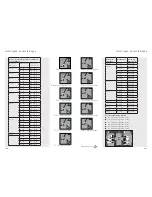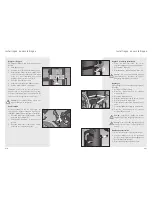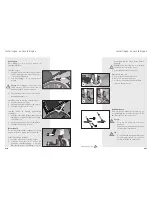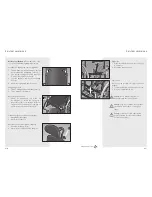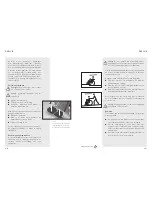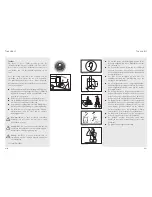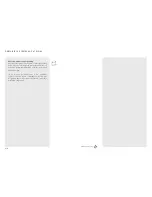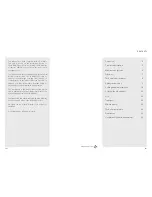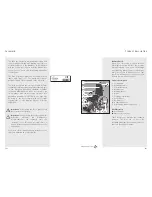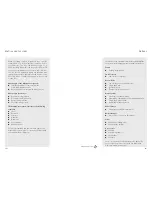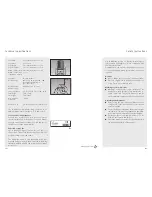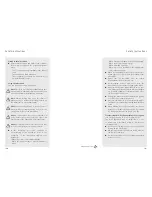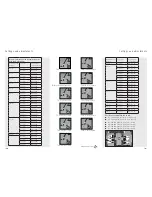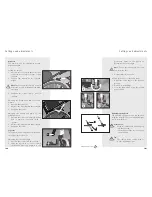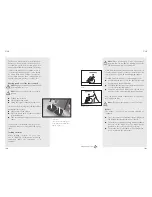
Safety instructions
EN13
Safety instructions
EN12
Transporting the wheelchair with the occupant in it
in a taxibus
(see also page 30 for more information)
The Roxx has been successfully tested by TNO to be
a “crashtest safe” wheelchair, in accordance with the
ISO 7176-19 standard. It can therefore be transported
with the occupant in it in a taxibus (see also the sticker
on the wheelchair).
n
Attach the wheelchair with its occupant in it in a
taxibus with a four-point securing system.
n
In addition, use a 3-point safety belt to safely
transport the occupant of the wheelchair.
Note:
The normal seat belt used to hold the
occupant in position is not intended for use as a
safety belt.
When transporting the wheelchair with the occupant
in it, Life & Mobility recommends fitting the wheelchair
with a Matrixx headrest.
Slopes and other obstacles
(see also page 29 for more information)
n
The wheelchair is more likely to tip over on a slope
than on a level surface.
n
Always go off a pavement backwards to prevent
the wheelchair from leaning forwards allowing the
occupant to fall out. Never go down stairs in the
wheelchair alone.
n
Never propel the wheelchair up a slope with an
angle greater than 5°.
n
Ask somebody to help you if you are unsure
whether you can reach the top of the slope by
yourself.
n
Lean or push your body in the direction of the top
of the slope. This will shift the centre of gravity of
the wheelchair forward and reduce the risk of the
chair tipping over backwards.
n
The person pushing the wheelchair must continue
to push the chair to prevent it from starting to
move backwards under its own momentum.
n
Do not turn the wheelchair round on a steep slope.
If the wheelchair is facing across a steep slope, it
can very easily tip over.
n
Keep your speed under control when descending
slopes.
n
The accompanying person must reduce the speed
of the wheelchair using the push-handles.
n
If you are using the wheelchair yourself, slow the
wheelchair down using your hands on the hand
rims only. Never use the brake as this can cause
you to lose control of the wheelchair.
Other
n
Take care when using the wheelchair on surfaces
that are slippery due to rain, ice or snow!
n
Do not allow the wheelchair to come in contact
with seawater: seawater is aggressive and will
corrode it.
n
Do not allow the wheelchair to come in contact
with sand: sand can penetrate the rotating parts of
the wheelchair, causing unnecessarily rapid wear.
n
Do not leave the wheelchair in direct sunlight: the
upholstery can become too hot, causing burns or
oversensitivity of the skin.
n
If you are under the influence of substances that
can influence your ability to drive, you are not
allowed to use the wheelchair.
n
Your eyesight must be sufficiently good to allow
you to use the wheelchair safely in the situation
concerned.
n
Ensure that there is no loose-hanging clothing. It
could become caught between the wheels.

